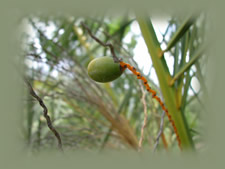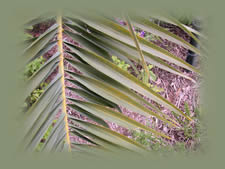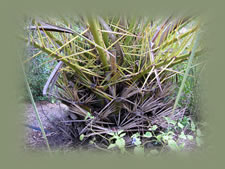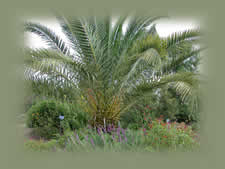Family: Arecaceae
Form: Single-trunked palm reaching 60 ft tall and a spread of up to 40 ft
Leaves: Pinnately compound leaflets, induplicate, spines at base of petiole
Stem/Bark: Persistant leaf bases
Flower: Small and white flowers on branching inflorescence
Fruit: Drupe, occuring in large clusters
Comments: Phoenix canariensis is related to another specimen palm tree, Phoenix roebelinii that is equally popular and more useful for smaller landscapes.



